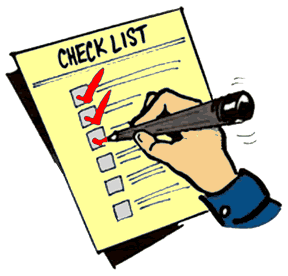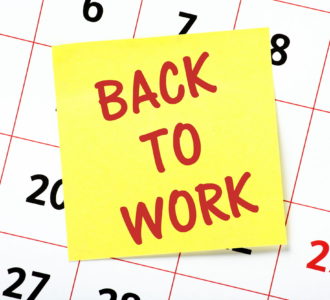Too many people identify a problem and then dig right in without organizing their thoughts and taking a tactical approach to solving their problem. The first step I use in helping clients to think clearly about their probelsm, is to have them write down the key elements to solving the problem. I use the attach Issue Organizer to help them.

Articles, books, blog posts, seminars, and webinars all expound on the virtues of having a solid to-do list in order to be more productive. I disagree. If you just have a long task list, you spend too much time figuring out what you need to do first. And even then, you have to spend more time deciding on the specific steps to accomplish the task. Worse yet, trying to figure this out when you come into the office each time can be a big waste of time.
A New Way: The 3-2-1 Approach
To not just get more done, but to get the right things done, I use an approach I call 3-2-1. First, 30 – 45 minutes before I leave the office (and I put an alarm in my calendar to make sure I don’t forget) I prepare for the next day. This is the most important step because you want to be able to get right to work when you come in the next day (of course, after getting your coffee and bagel). I make a list of 3, and only 3, of the absolutely most important tasks I need to get done the next day. Emails and phone calls are not part of this list.
By only picking three key objectives for the day, I’m able to focus my attention on the truly important goals and I don’t worry about what I’m not getting done. By limiting what I have to do, I’m more likely to get them done, I’m more likely to gain confidence by getting things accomplished each day, and I don’t worry about what I haven’t done.
Next, I pull out the Daily Planner, and block off 50 minutes for each of the three tasks; the remaining 10 minutes of each hour is for a break. So, if I get in the office at 8:00, I work on Task 1 from 8:00 -8:50, Task 2 from 9:00 – 9:50 etc . . . In these time blocks, I don’t simply insert the Task name, because all too often these are just generalities. Instead, each time slot is filled with 2 specific action steps that lead towards Task completion.
Importantly, I don’t work on any task for longer than one hour because I inevitably become fatigued and lose focus on this task. After 11:00, I return phone calls and emails. After lunch, I revisit the tasks I have not completed and again work on each for no more than one hour at a time. At 3:30, I again return emails and voicemails.
Later in the day, I work on personal matters. I do my personal matters at this time because that is when I have my lowest energy, and my shortest attention span.
In Summary:
3 – Major tasks that must get done the next day
2 – The number of specific action step that will help you accomplish the task
1 – Hour to work on each task.
Now, what strategies do you use to be more productive? Let us know, because I’m sure other readers can use your tips as well.




